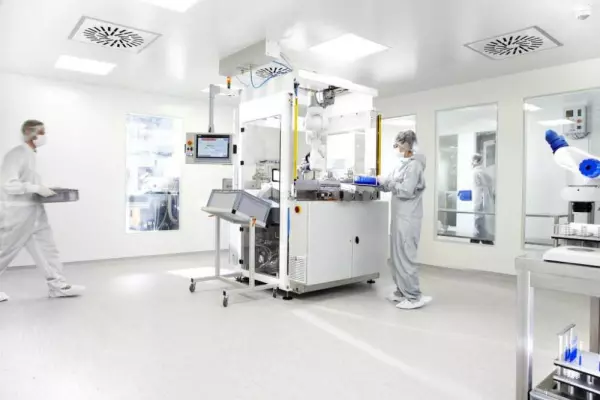
Injection molding advantages for medical...
We have been successfully developing and manufacturing plastic parts and assemblies for medical tech...
Portal and digital medical technology fair of the largest MedTech cluster in Germany

Injection molding advantages for medical...
We have been successfully developing and manufacturing plastic parts and assemblies for medical tech...

The cleanroom qualification standard DIN EN ISO 14644 differs from VDI 2083. The ISO 14744 directive family consists of 10 parts that cover the cleanroom technology. The latter consists of over 20 sheets, which are not always easy to follow. The main difference between the two is the number of requirements. The first one deals with planning and design. The second covers airborne particle concentration. In this way, the cleanrooms must meet the highest purity standards.
The second standard - the ISO 14644-1--is the best solution for pharmaceutical manufacturers. It specifies the requirements for the air cleanliness and filtration system in a pharmaceutical cleanroom. It outlines the standards for the level of air purity and filtration required for aseptic manufacturing. The requirements for this type of quality control are also listed in the guidelines. In addition, the standard requires periodic monitoring. This is to ensure that the cleanliness of a cleanroom is maintained and that it does not introduce any new hazards.
As part of the qualification process, pharmaceutical cleanrooms are classified according to their degree of air purity. They have to meet certain limits for airborne contamination, which are specified in the relevant standards and guidelines. This means that particle measurements must be performed before, during, and after operation. Furthermore, the cleanrooms must undergo periodic inspections to determine their quality and maintain it. This way, regulatory authorities can monitor the effectiveness of the airborne contamination control system.
While the ISO 14644 qualification is a global standard, there are also national standards. The German standards are based on VDI 2083, while the Austrian and Swiss standards follow ISO 14644. The VDI 2083 has been adopted by several countries and is aimed at standardizing cleanroom technology. In addition, many countries have extended the requirements of the former and are now adopting the former in their own markets. In international cooperation, it is important to ensure that the requirements of the two standards are equivalent.
The ISO 14644 qualification has three classes of airborne particles. The lower level is classed as C1, while the higher one is Class II. The upper limit is Cn. The second level is Cn. In addition to these, there are other requirements. The lower level of cleanliness is the same as the lower level of cleanliness. The two classes are comparable in terms of the number of airborne particles. The highest class is A3 for the largest size.
The ISO 14644-1 specification describes the sampling methods. The requisites are outlined in the ISO 14644-2 standard. The ISO 14544-3 standard is based on the ISO 14834-3. In addition to defining the requirements, the guidelines include the definitions of a recovery test. The standards define the sampler's process and its processes.
Become a digital exhibitor yourself in the online portal of the largest and best-known MedTech cluster region in Germany and inform the world of medical technology about your products and services as well as about news, events and career opportunities.
With an attractive online profile, we will help you to present yourself professionally on our portal as well as on Google and on social media.